Reviews
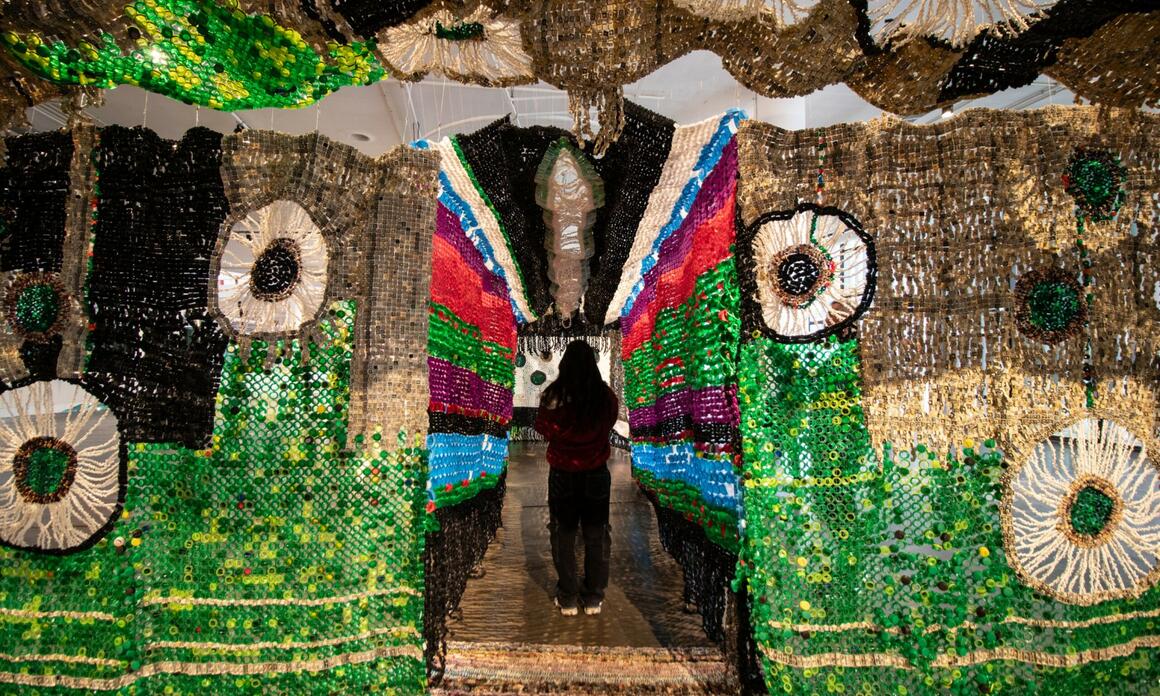
FOUR WORKS BY FOUR ARTISTS AT THE SÃO PAULO BIENNIAL
By María Galarza
It is not easy to compose a path through monumental works inside a monumental space. At the 36th São Paulo Biennial, the artists invited by Bonaventure de Soh Bejen Ndikung and his team, present large-scale works whose textures and forms sometimes speak to each other linearly, and other times through oblique movements.
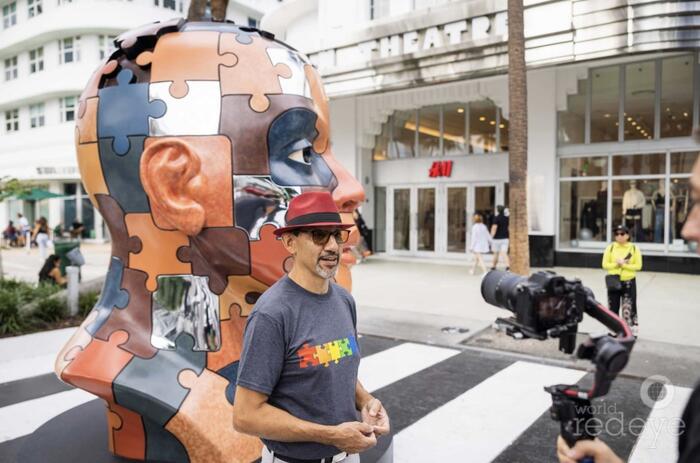
MIAMI ART WEEK SPOTLIGHT: OSCAR MARTÍNEZ
By Violeta Lozada
At this year’s Miami Art Week, a surge of Latin artistic energy is reshaping the city’s creative landscape. One standout exhibition is Oscar Martínez’s new sculptural installation on Lincoln Road demonstrating the depth, range, and confidence with which Latin artists are stepping into one of the world’s most influential art gatherings.
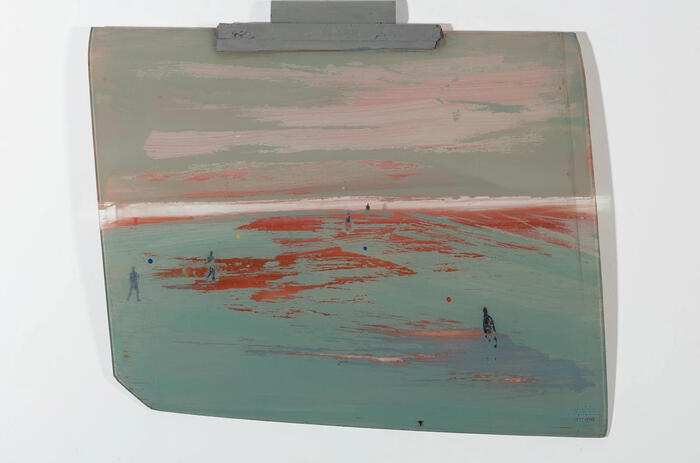
TATIANA BLASS: HALF UNDERGROUND TORNADO
By Marina Baltazar, cultural critic, writer, and researcher

THE NOISY PRESENT AND THE EVERLASTING SILENCE AT DEPARTAMENTO 112
By Violeta Méndez
At the Argentine gallery, Pariente by Hans Petersen and Redondita by Juana Cravero engage in dialogue: two exhibitions that explore what we have turned into habit, and the desire that never fades away.

THREE PERSPECTIVES THAT EXPAND PHOTOGRAPHY AT PINTA BAPHOTO 2025
By Violeta Méndez
Blurring the boundaries between image, performance, and experimentation, projects by Gustavo Nieto, Nicola Costantino, and Donna Conlon stand out in a new edition of Pinta BAphoto, returning to La Rural with proposals that expand the scope of photography today.

BEYOND THE BLUE CHIPS: ERIC ALFARO AND THE RISE OF EMOTIONALLY RESONANT ART
By Violeta Lozada
As the global art market recalibrates, a quiet but powerful shift is rising. Collectors are increasingly moving away from multimillion-dollar blue-chip purchases and towards living artists whose work offers emotional resonance, personal connection, and affordability. Cuban painter Eric Alfaro is a standout in this new wave, an artist whose work combines painterly sophistication with accessible pricing and deeply human themes.

NOTES ON A PICTORICAL SURFACE — MARINA PEREZ SIMÃO: TUNING FORK
By Mario Gioia, art critic and independent curator

FOUR WORKS BY ANATOLE SADERMAN TO REMEMBER AT PINTA BAPHOTO
By Violeta Méndez
Simple, yet with complex movement, the artist managed to capture what his sensitive eyes perceived, and today his name is part of the local art history as a reference in photographic portraiture.

GATHERING THE SCATTERED: LUNA PALAZZOLO-DABOUL’S POETIC ARCHAEOLOGY OF MEMORY
By Violeta Lozada
In her solo exhibition ‘Scattered Pieces’, Miami-based artist Luna Palazzolo-Daboul transforms the act of scattering into a meditation on memory, labor, and belonging. Installed in Paradise Plaza (151 NE 41st Street, Suite 133), the site-specific work unfolds across the floor as an archive of fragments, each one a piece of the artist’s evolving journey.
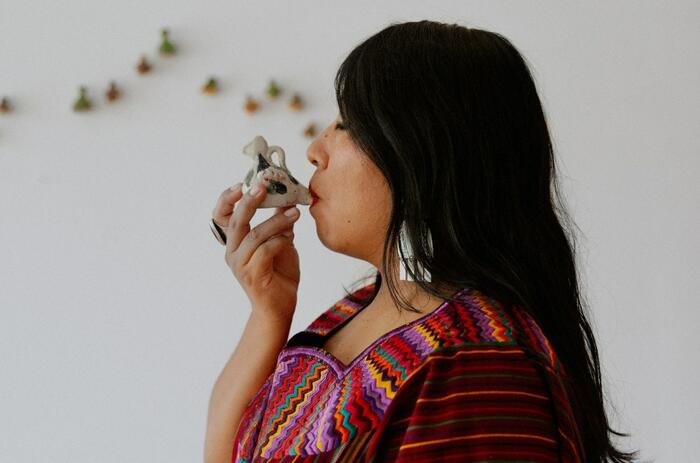
ARTBO 2025: CARTOGRAPHIES OF MARKET, IDENTITY, AND NATURE
By Candelaria Penido
ARTBO, Bogotá’s international art fair held from September 25 to 28, once again reaffirmed its position as one of Latin America’s most relevant platforms. It brought together 46 galleries and more than 180 artists across the five floors of Ágora Convention Center. With a program intertwining market and thought, this year’s edition emphasized diversity in formats, trajectories, and geographies, offering a multifaceted map of contemporary regional production.

WALKING THROUGH THE BODY: AD MINOLITIS MIAMI INSTALLATION
By Violeta Lozada
In the heart of the Miami Design District, Argentine artist Ad Minoliti has transformed a stairwell into something unexpected: a living, breathing body. On Friday, September 26, 2025 at 6:30 PM, the Miami Design District will host the official unveiling of Pink Spatial Microbiota at Buick Building.

LATIN AMERICAN ARTISTS IN SPAIN: NOTES FROM A RESEARCH PROJECT
By Mónica Sotos
What are the successive diasporas of Latin American artists to Spain from the final years before the beginning of the 21st century to the present about? Article 1 of a 3-part series.
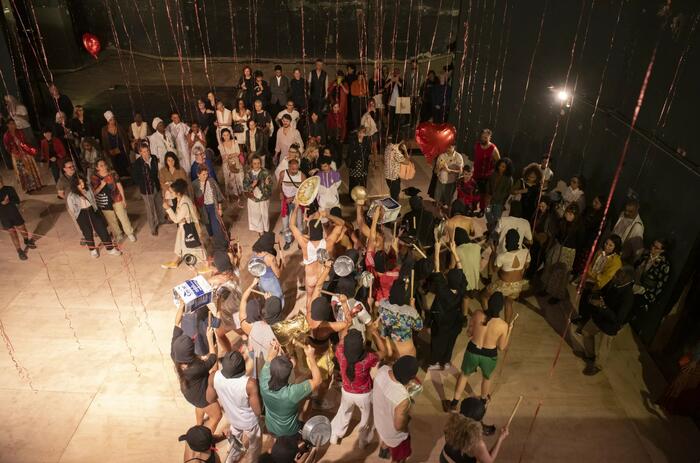
“BATUCADA,” MARCELO EVELIN’S PERFORMANCE: A STORY
By María Galarza
In Casa do Povo's basement, Marcelo Evelin’s performance unleashes a ritual of bodies, rhythms, and nudity that allows no anticipation. An experience that demands looking, breathing, and moving through the present without guide or return.
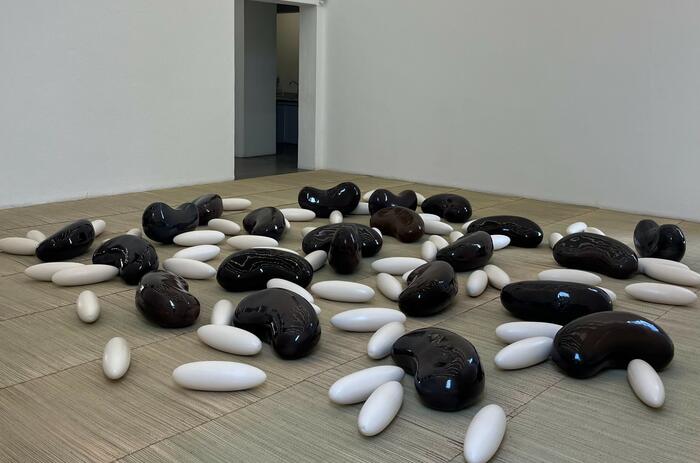
SÃO PAULO: A JOURNEY THROUGH GALLERIES, STUDIOS, AND RESIDENCIES
By: María Galarza
Like any big city, in São Paulo everything happens at once: galleries, residencies, studios, and exhibitions weave together in an electric network that nurtures local artists and connects them with global circuits. The city works like a node: intense, vibrant, inexhaustible.
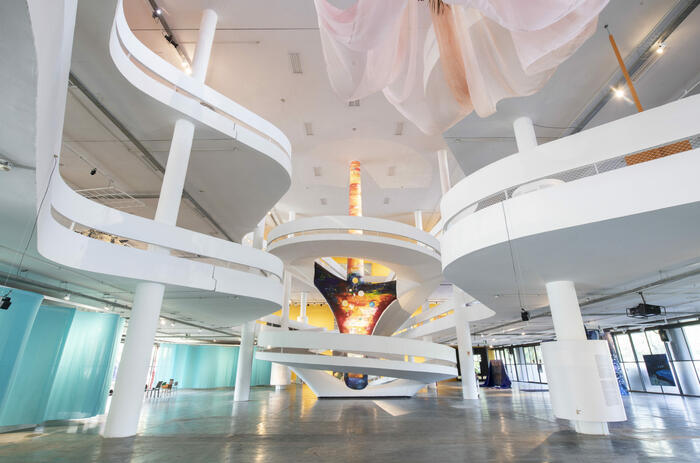
ANGLES, CROSSINGS, MOVEMENT, JUXTAPOSITION: THE 36TH SÃO PAULO BIENNIAL
The São Paulo Biennial opened its 36th edition with a mix of proposals that invite a return to the senses: textures are highlighted, sounds resonate, and at times even scents appear. With a large number of commissioned works, the curatorial approach—led by Bonaventure Soh Bejeng Ndikung—was guided by several threads, all centered on the idea of “humanity as practice”.
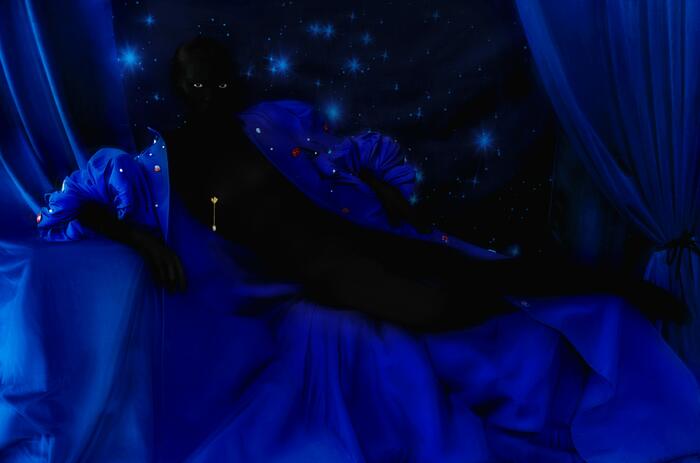
ELLIOT AND ERICK JIMENEZ: TWINS WITH A VISION
By Violeta Lozada
For the first time, twin brothers Elliot and Erick Jiménez step into a museum as an artistic duo, presenting a body of work that is both personal and deeply spiritual. Identical twins with identical passions, they work through photography to explore themes of memory, identity, and tradition, but with a profound layer of meaning rooted in their spiritual practice of Lucumí, a syncretic Afro-Caribbean religion born in late nineteenth-century Cuba. Emerging from the fusion of Yoruba, Catholicism, and Spiritism, Lucumí continues to shape lives across generations of the Cuban diaspora, and in the case of the Jiménez brothers, it has become both inspiration and guide.

THE HYPNOTIC NATURE OF AN EXPOSED STAGECRAFT
By Violeta Méndez
Just steps from the door, I heard the echoes of Tramoya. Curiosity guided my body toward the gallery, stealing from me the chance to prepare for the detours and fragmentations the works would provoke—and for the attempts to piece together those fragments within my own body.
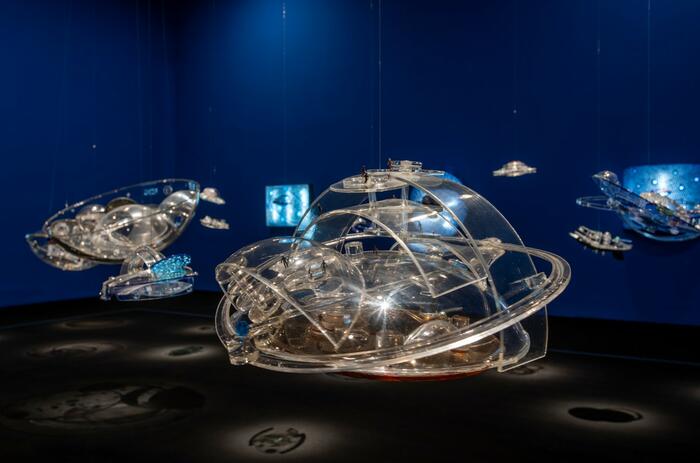
GYULA KOSICE: INTERGALACTIC, AN EXHIBITION THAT RESHAPES HIS VISIONARY CONTRIBUTION
By Adriana Herrera Téllez, PhD
Gyula Kosice: Intergalactic is one of those axial exhibitions that unsettle the boundaries of the usual narratives of art history by incorporating visions that broaden our understanding of the contributions of foundational artists who, like this creator—born in today’s Slovenia in 1924 and later naturalized in Argentina—have not been sufficiently incorporated into the global narrative of concrete art.

SOFT RESISTANCE
By Daniela Arroyo
On Atardecer en un bosque (Sunset in a Forest), the latest solo exhibition by Tadeo Muleiro at the Luis Perlotti Sculpture Museum in Buenos Aires, curated by Jen Zapata.
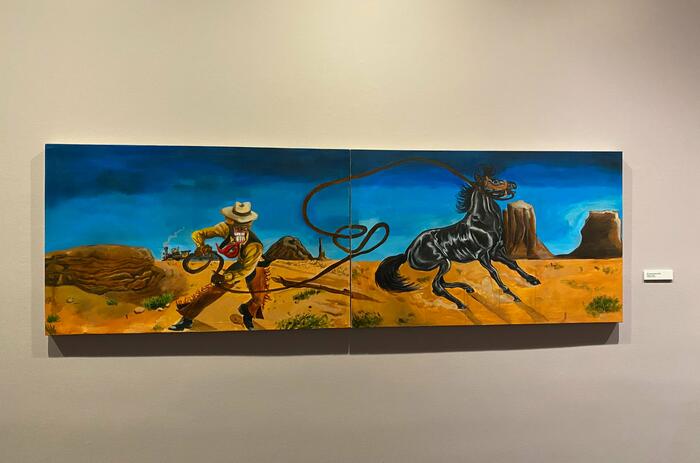
THE AMERICAN DREAM, REIMAGINED BY DIMITHRY VICTOR
By Violeta Lozada
What does the “American Dream” really mean? For some, it’s white houses with new furniture and success stories. For others, especially immigrants from Latin America and the Caribbean, it’s a more complicated mix of hopes, struggles, and reinvention. That’s exactly the conversation Haitian-American artist Dimithry Victor brings to the table in his exhibition The American Dream at the NSU Art Museum in Fort Lauderdale.
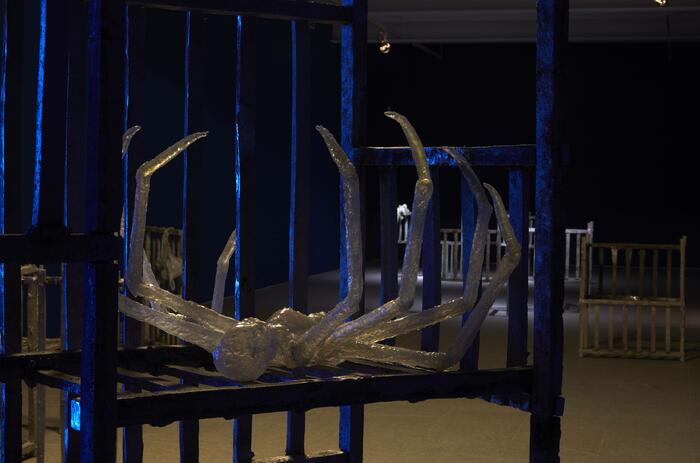
MEMORY, PHANTASY AND RESISTANCE IN NAUFUS RAMÍREZ-FIGUEROA
By Álvaro de Benito
Naufus Ramírez-Figueroa (Guatemala City, Guatemala, 1978) has long warranted a mid-career exhibition such as the one hosted by the Museo Reina Sofía. His ongoing activity and presence in institutions and performances over recent years have positioned the Guatemalan artist as a key figure in the development and visibility of contemporary Central American art beyond its geographic framework.

BETWEEN A DRAGON AND A VIRGIN, AGAINST DOMESTICATED IMAGINATION
By Violeta Méndez
If there were no way to create something new—believing everything has already been done—if every form of creative intelligence were exhausted, then it would be time to unearth hidden worlds.
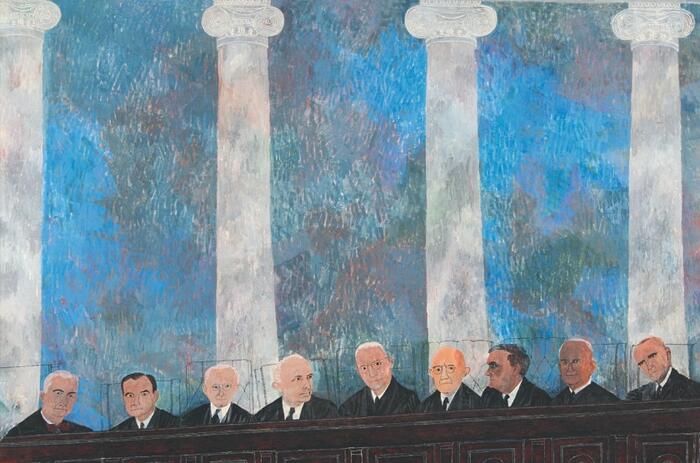
BEN SHAHN, ON NONCONFORMITY
By Julia P. Herzberg, Ph.D.
Ben Shahn, On Nonconformity is the artist’s first retrospective in the United States in almost fifty years. Impeccably curated and designed, the exhibition aims to bring renewed critical attention to one of America’s most consequential modernists.
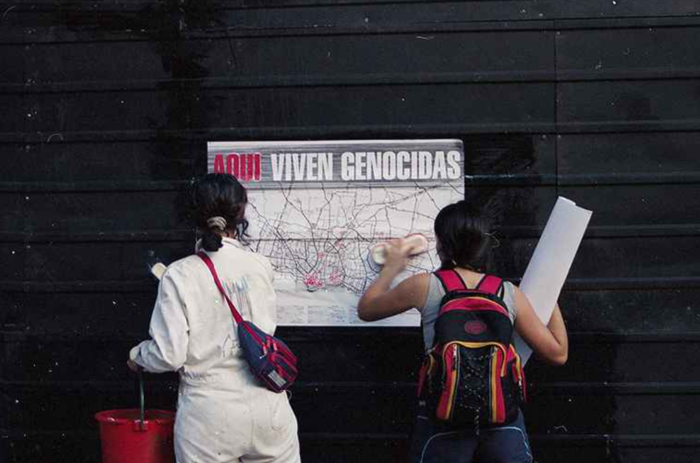
THE ARCHIVE HITS THE STREETS: DISOBEDIENCE IS ALWAYS POLITICAL
By María Galarza
After its acclaimed presentation at the 60th Venice Biennale, the Disobedience Archive lands at PROA21 with a new configuration. What in Italy took the form of an animated pre-cinematic machine —The Zoetrope— that drew the viewer into a visual experience, now adopts in Buenos Aires a more intimate and austere format.

DEPARTAMENTO 112: A STORY, A BIRD, AN ENCOUNTER
The artist and the gallerist were drinking mate on Fleming Avenue in Martínez, in front of the gallery, trying to hold onto the warmth of a cool autumn sun. That simple, everyday, and sincere image foreshadowed the exhibition at Departamento 112.

A NEW REVIEW ON CLAUDIA ANDUJAR’S A SÔNIA
The Elba Benítez Gallery in Madrid is currently hosting an exhibition of photographs from A Sônia, a project by Claudia Andujar (Neuchâtel, Switzerland, 1931), created in 1971. This body of work stands as one of the most significant early explorations into the creative manipulation of the photographic snapshot. For this occasion, the exhibition focuses on a carefully curated selection of images that establish a dialogue of balance, intensity, and chromatic richness with the surrounding space.
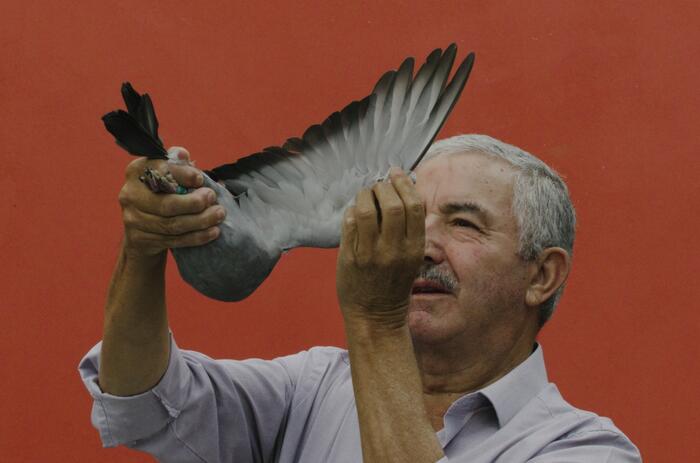
JONATHAS DE ANDRADE IN MOTION, AT CONDEDUQUE
The videographic universe of Jonathas de Andrade (Maceió, Brazil, 1982) is only one part of his broader artistic practice. It is, of course, significant—complementing other worlds that shape the ideology and imaginary embedded in both the work and the persona of the Brazilian artist. For this reason, the selection of exclusively audiovisual works under the title Tiempo, sueño, olor (Time, Dream, Scent), on view at Madrid’s Centro de Cultura Contemporánea Condeduque, offers a concise, representative, and necessary approach that ultimately bears witness to a part for the whole.

RE-ENCHANTING SURREALIST NARRATIVES
With major exhibitions such as the 59th edition of the Venice Biennale, The Milk of Dreams (2022), Surrealism Beyond Borders at Tate Modern and the Metropolitan Museum in the same period, Surrealism at the Centre Pompidou (which closed in 2025), and various revivals of lesser-known figures and centenary celebrations of the movement, surrealism has gained renewed momentum and has (somewhat) emerged from technical archives and private collections around the world.

A DISPLAY OF PANAMANIAN DREAMS: ACTIVATIONS IN THE CITY OF ART
As part of Pinta Panamá Art Week, Lo que sueña toda vida takes place—an exhibition project that reflects on ways of living in the Central American country. Curated by Juan Canela and Emiliano Valdés, the program features a series of artistic actions by Felipe Gómez and Jonathan Harker, the Enlaces Program, Libertad Rojo, and Humberto Vélez.

THE TRANSFORMATION OF THE IMMATERIAL IN JORGE SATORRE
Ría, Jorge Satorre’s (Mexico City, Mexico, 1979) first exhibition in Spain, can be approached as a compendium of the sublimation of his ideas and research into the conceptual and material limits of the different practices he has engaged in. The show, curated by Max Andrews and Uruguayan Mariana Cánepa Luna for the Museo Centro de Arte Dos de Mayo, is thus conceived as an immersive space in which those very boundaries are blurred in favor of a deeper observation of processes.



